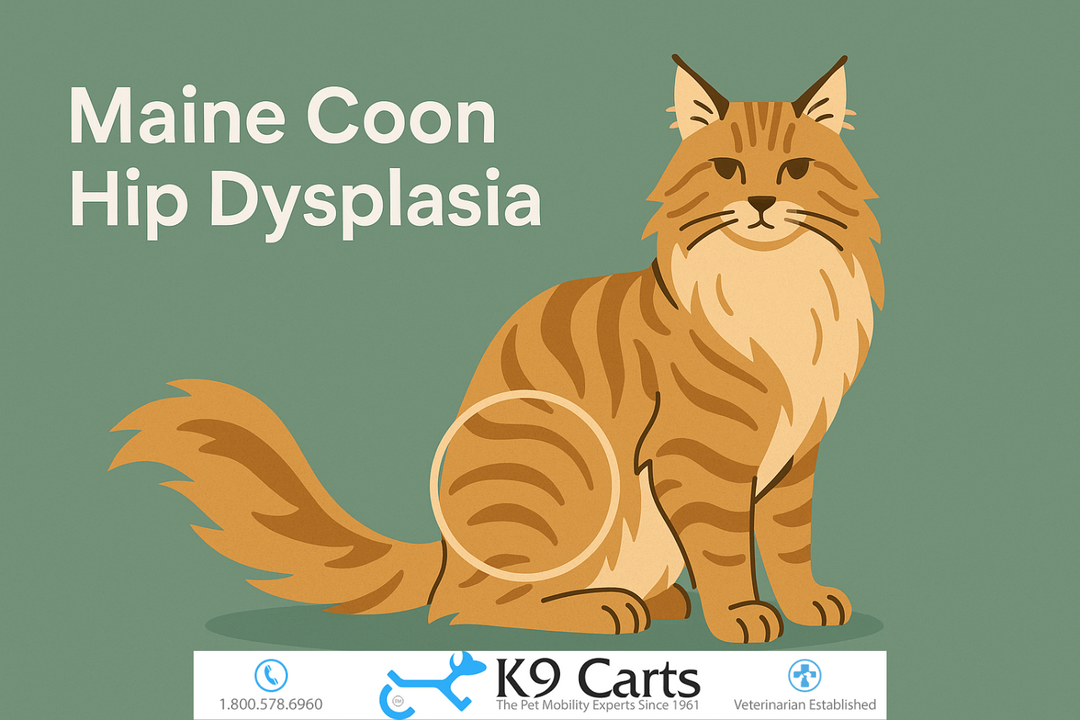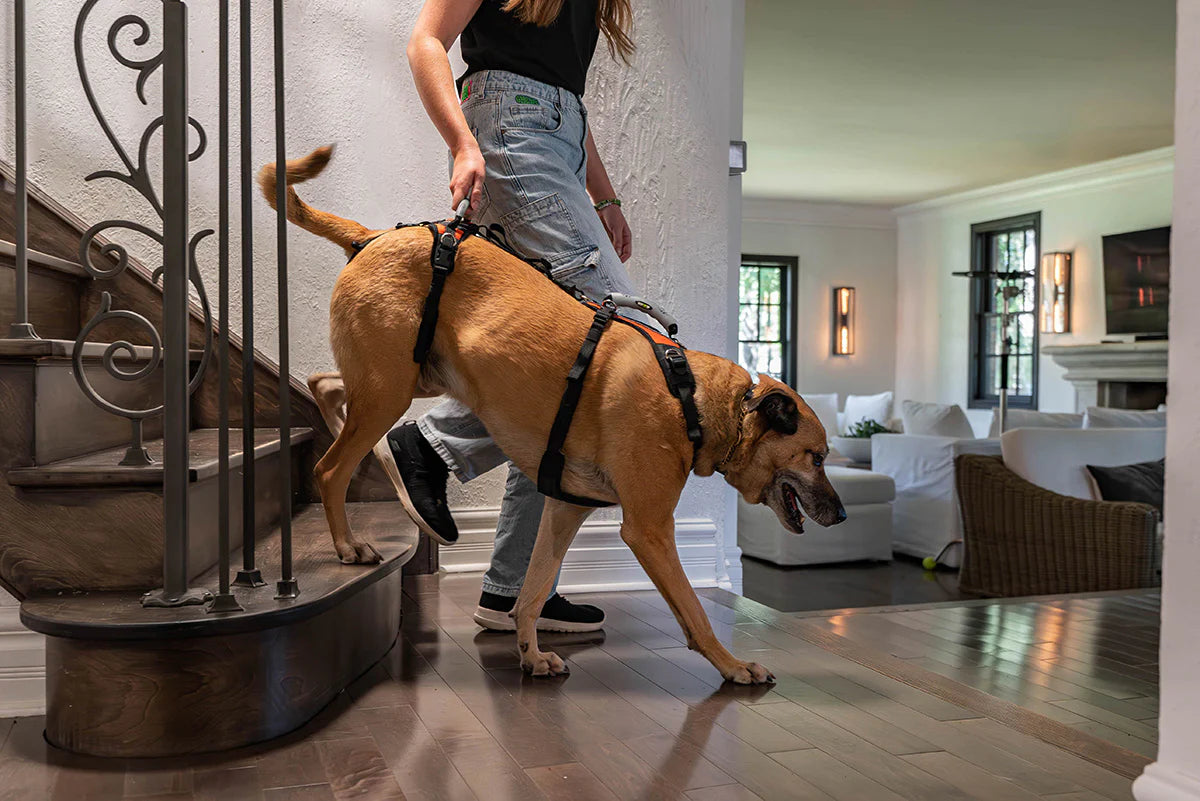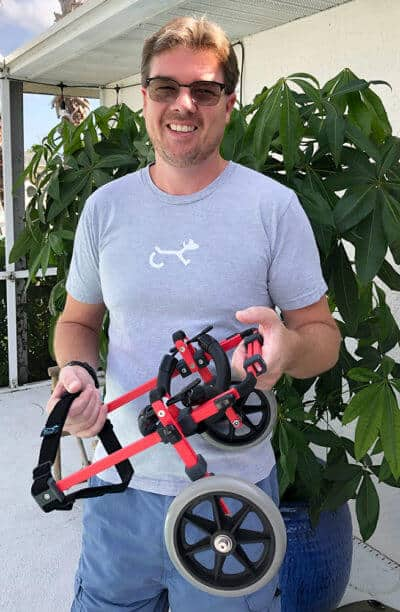Maine Coon Hip Dysplasia: Causes, Symptoms & Treatment Options

Maine Coons are one of the most beloved cat breeds in the United States. They are large, friendly, and easy to love. But because of their big size, they can sometimes face problems with their hips. One common problem is hip dysplasia.
If you care for a Maine Coon or plan to adopt one, learning about hip dysplasia will help you keep your cat healthy and happy. This guide explains what hip dysplasia is, why it happens, how to spot it, and what you can do to help your cat live well if they have this condition.
What is hip dysplasia in Maine Coons?
Hip dysplasia is a problem with the hip joint. It happens when the ball and socket of the hip do not fit together well. Instead of sliding smoothly, the joint rubs or grinds. Over time, this causes pain and damage to the joint. While many people think of hip dysplasia as a dog problem, it can affect cats too. Maine Coons, due to their large size and weight, are more likely than other breeds to get this condition.
Why do Maine Coons get hip dysplasia?
There are a few reasons why Maine Coons can develop hip dysplasia. Some reasons are out of an owner’s control. Others can be managed to help reduce risk.
1. Genetics and breed size
One of the main causes is genetics. Hip dysplasia often runs in families. If a kitten’s parents have hip problems, the kitten is more likely to have them too. Maine Coons are naturally large cats, which adds extra stress to their hip joints.
2. Weight and growth rate
Being overweight can make hip dysplasia worse. Maine Coons grow fast and can weigh up to 20 pounds or more. If a cat grows too quickly or gains too much weight, the hip joint can have trouble forming the right way.
3. Poor nutrition
A diet that does not meet a kitten’s needs can affect bone growth. Maine Coons need balanced food to support healthy joints and bones as they grow.
4. Injury or trauma
An injury to the hip can also lead to hip dysplasia or make it worse. Cats that jump from high places or have an accident can hurt their hip joint.
How can you tell if a Maine Coon has hip dysplasia?
Spotting hip dysplasia in cats can be tricky because cats often hide pain. They do not always limp the way dogs do. Here are some signs to look out for.
Common signs of hip dysplasia in Maine Coons
-
Stiffness or trouble getting up after resting
-
Limping or favoring one leg
-
Less interest in jumping or climbing
-
Loss of muscle in the back legs
-
Trouble using the litter box due to pain while squatting
-
Making sounds of pain when touched near the hips
If you see any of these signs, it is best to talk to your vet. They can check your cat’s hips with an exam and x-rays.
How is hip dysplasia diagnosed in Maine Coons?
Your vet will start with a physical exam. They may watch how your cat walks and feel the hips to check for pain. X-rays are the best way to see how the hip joint looks. Sometimes, sedation is needed to keep the cat still for clear pictures. Your vet will look for signs that the ball and socket do not line up well or for arthritis that may have formed.
What are the treatment options for Maine Coon hip dysplasia?
Treatment depends on how bad the hip dysplasia is. Some cats can do well with simple care at home. Others may need surgery. The main goal is to help your cat feel comfortable and keep moving.
1. Managing hip dysplasia at home
For mild cases, your vet may suggest:
-
Weight control to reduce stress on the hips
-
Special joint-supporting food or supplements
-
Pain relief medicine if needed
-
Gentle exercise to keep muscles strong
Some cats may benefit from ramps or steps to help them get on furniture without jumping.
2. Physical therapy and mobility aids
Cats with hip dysplasia can do better with light physical therapy. This might include gentle massage, heat therapy, or special stretches. Some pet owners also use mobility aids. While cat wheelchairs are not as common as dog wheelchairs, some large cats like Maine Coons can use custom carts if they lose strength in their back legs.
At K9 Carts, we custom-build wheelchairs for cats that need help moving. Our lightweight carts can be made to fit a cat’s size and shape, giving them the freedom to walk and play safely at home or outside. While many people know us for helping dogs, we have helped cats with hip problems too.
3. Surgery for severe hip dysplasia
In severe cases, surgery may help. Options include:
-
Femoral head ostectomy (FHO). This removes the ball part of the hip joint. The leg muscles hold the leg in place and form a false joint. Cats do well with this surgery, especially if they are active and strong.
-
Total hip replacement. This is less common for cats but may be an option for some. It replaces the whole hip joint with an artificial one.
Your vet will help you decide what is best for your cat.
Can hip dysplasia in Maine Coons be prevented?
You cannot always prevent hip dysplasia, but you can take steps to lower the risk.
1. Choose a good breeder
If you are buying a Maine Coon kitten, pick a breeder who tests their cats for hip problems. Responsible breeders check for hip dysplasia in parent cats.
2. Feed the right food
Feed your kitten high-quality food made for large breeds. Good nutrition helps bones grow the right way.
3. Keep a healthy weight
Extra weight puts more stress on the hips. Watch your cat’s weight and feed measured meals instead of free feeding.
4. Avoid risky jumps
Try to limit high jumps by giving your cat safe climbing spots and ramps. This can help protect the hips from injuries.
Living well with hip dysplasia
A Maine Coon with hip dysplasia can still live a full life. Many cats adjust well with simple changes at home. Keep up with vet visits, watch for pain, and support your cat’s joints as they age. Talk with your vet about ramps, steps, soft bedding, and gentle playtime.
If your cat loses strength in the back legs, a custom cart may help them move with less pain. At K9 Carts, we understand how much your cat means to you. That is why we build every wheelchair by hand to fit each pet’s body and needs. We want every cat to feel safe and free to move.
Keep your Maine Coon moving and happy
Hip dysplasia can be tough for Maine Coons, but with the right care, these gentle giants can still enjoy life. Know the signs, get help early, and support your cat with good food, a safe home, and the tools they need. If you ever need help with mobility, reach out to K9 Carts. We are here to help your pet move comfortably and live life to the fullest.








